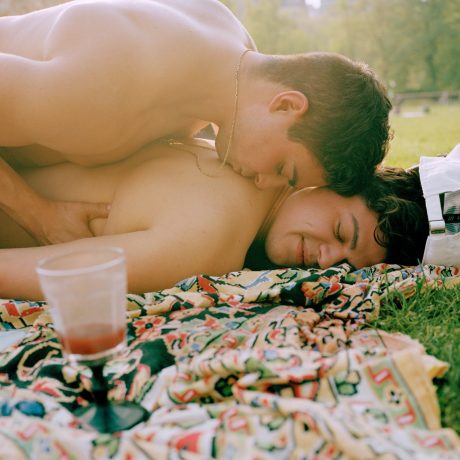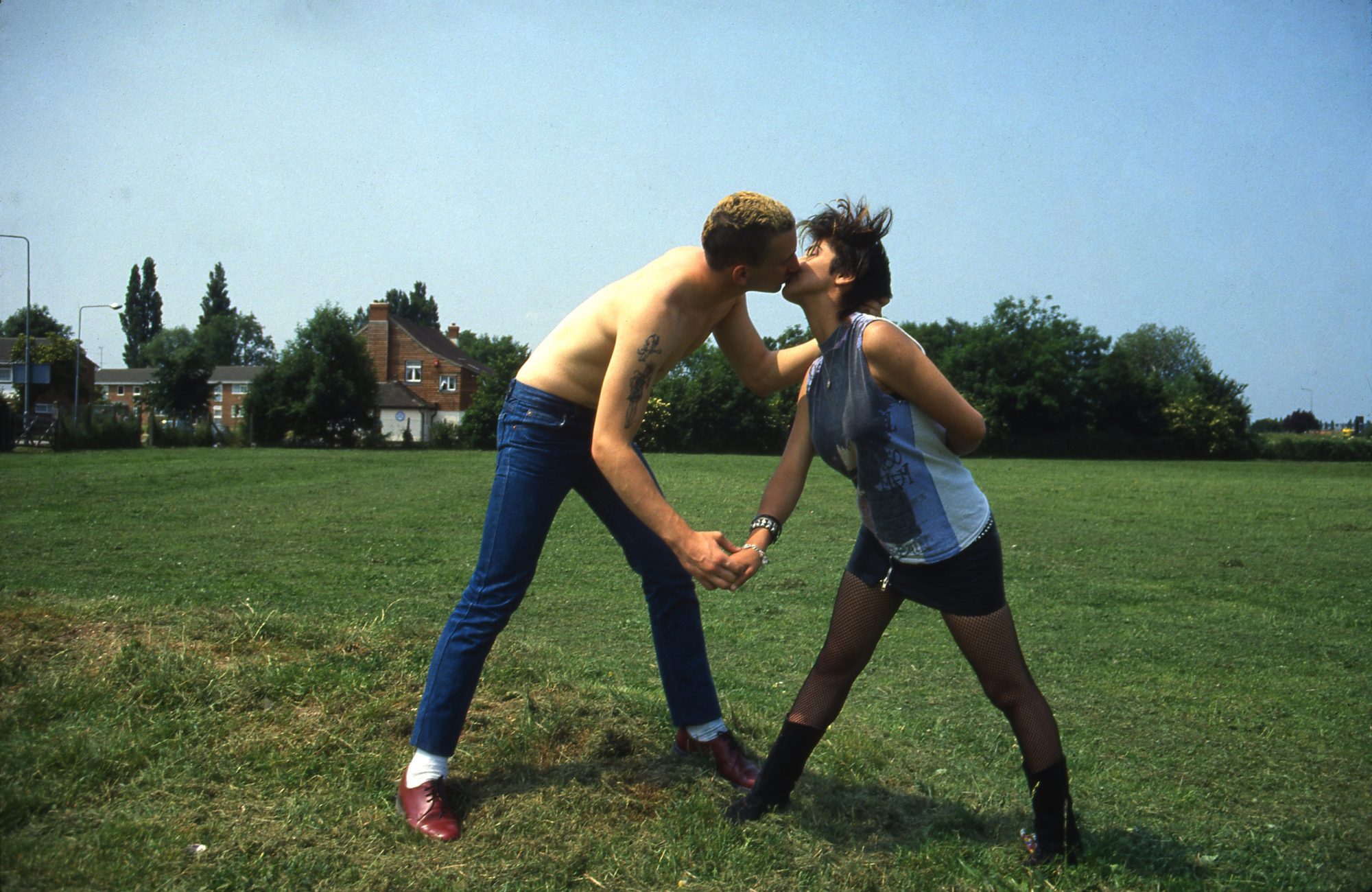
Launched in the midst of a sweltering summer, Grown Up in Britain: 100 Years of Teenage Kicks celebrates the scenes, sounds and styles of young people in the UK from the roaring twenties till today. Curated by the London-based Museum of Youth Culture and showing at the Herbert Art Gallery & Museum in Coventry through February 2023, this socio-historical exhibition chronicles the varied experiences of teenagers as they navigate the liminal space between childhood and adulthood, under the influence of culture while shaping it at the same time.
Lining the walls of the mixed media exhibition are iconic photographs, some captured by well-known artists, others submitted by the public from personal albums across the country. Collectively, they bring us face-to-face with subcultures and take us on a journey from poster-plastered bedrooms to sweat-soaked nightclubs, factory floors to street protests. It’s a viewing experience that is at once nostalgic and forward-looking, as the power of youth to enact change materialises across the decades. Here are some of our highlights.
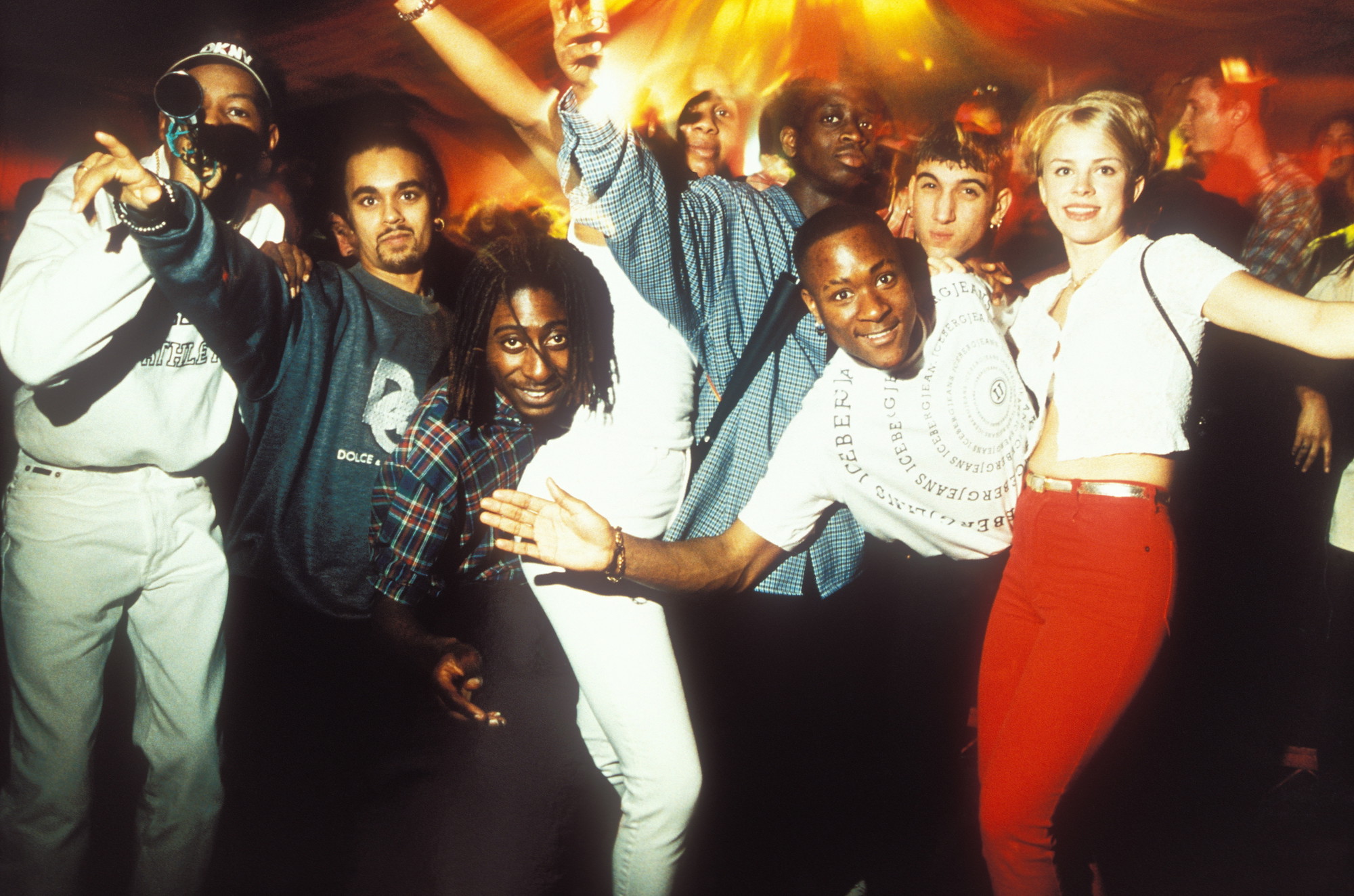
Tristan O’Neill, 1996
In his early teens, Tristan O’Neill discovered a love of photography and London’s pirate radio stations. In the 1990s, he went on to combine his two passions, photographing raves across the country and witnessing the shift in genres from breakbeat hardcore to jungle. In this heady image from 1996, ravers pose on the dancefloor at Bagleys nightclub in King’s Cross, London. “Taking pictures of other people having fun, getting off on the high of the people – that always used to give me a lot of satisfaction,” O’Neill has said.
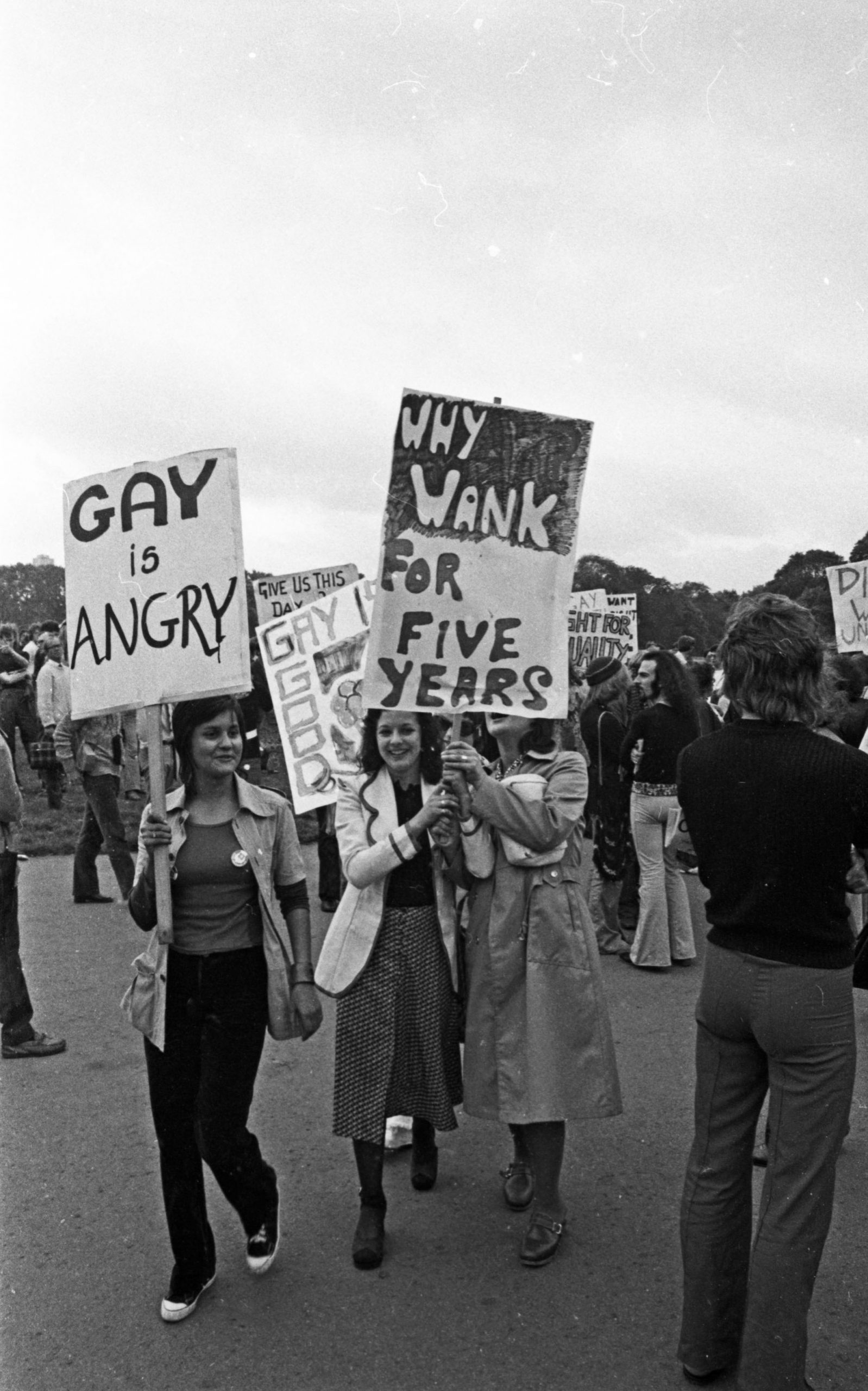
Peter Bull, 1971
Armed with sarcastic placards, protestors from the Gay Liberation Front Youth Wing took to the streets of London in 1971 to march against the age of consent. At the time, the UK’s age of consent for gay and bi men was set at 21, even though the age of consent for heterosexual people was 16. It was reduced to 18 in 1994, before an equal age of consent was finally secured by the Sexual Offences (Amendment) Act 2000. Peter Ball’s black-and-white photographs from that demonstration show the start of a long and drawn-out struggle for LGBTQ equality in the eyes of the law.
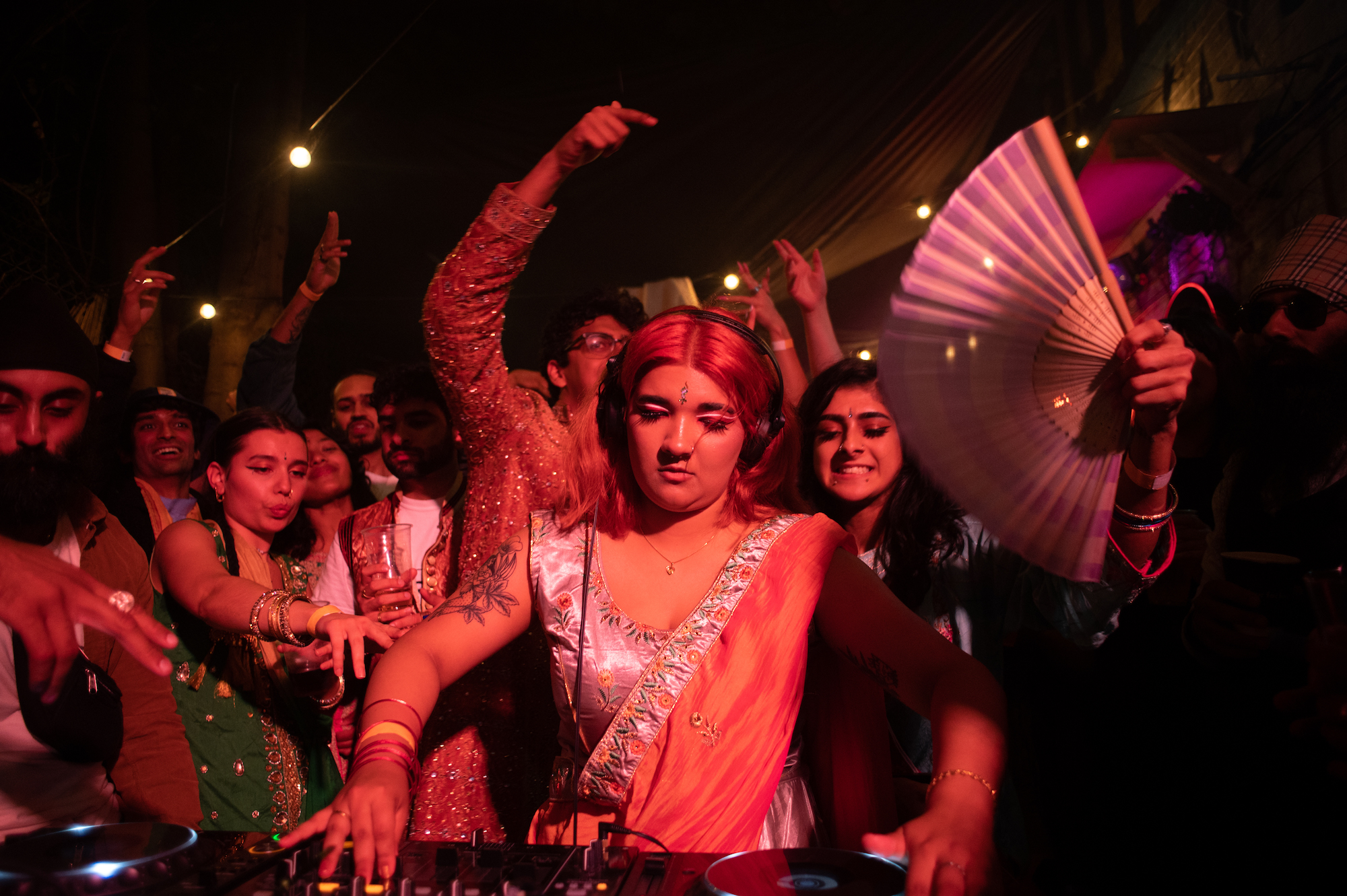
Aiyush Pachnanda, 2021
One of the most recent photos in the show is by Aiyush Pachnanda, the 24-year-old London-based photojournalist who chronicles the dynamism of packed dance floors and street demonstrations. This shot captures Gracie T DJing at the Daytimers Boiler Room night curated by Yung Singh (on the left) in London last summer. Taking its name from the daytime raves of the 80s and 90s, where British south Asian music fans gathered to dance to bhangra, garage and jungle, Daytimers is a collective that emerged out of lockdown, committed to showcasing and celebrating South Asian artistry.
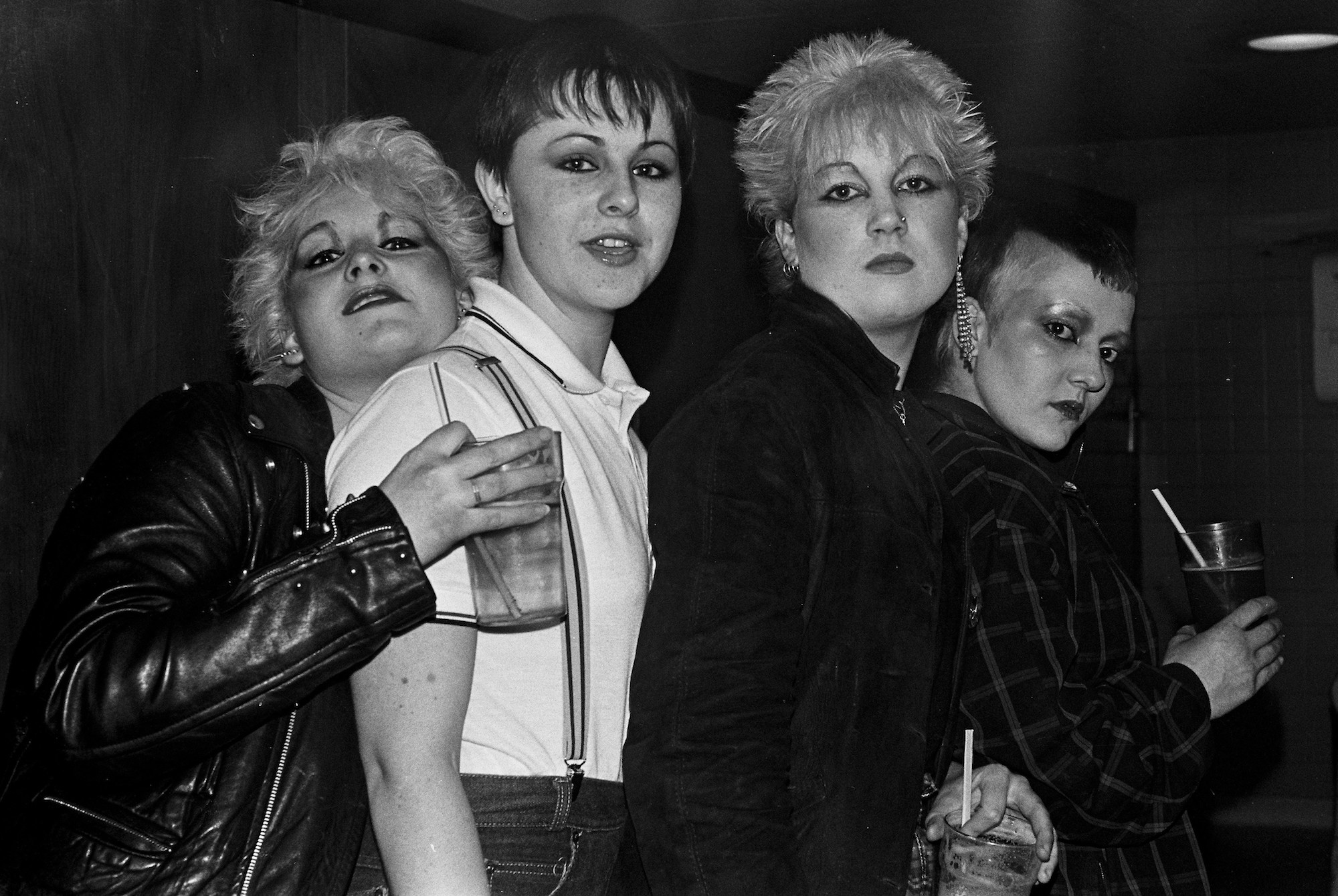
Clare Muller, 1981
Born and raised in North London, Clare Muller went to school with kids who grew up to be pop and rock stars in the early 80s; the likes of Madness and The Bodysnatchers. Possessing no musical talent of her own, she followed her friends around taking photographs, and proceeded to shoot stars like Queen, Annie Lennox, and the Clash for heavy hitting music magazines. This black-and-white image of punk and skinhead girls at a gig in Hastings in 1981 brings the viewer up close and personal to the subcultures of the time.
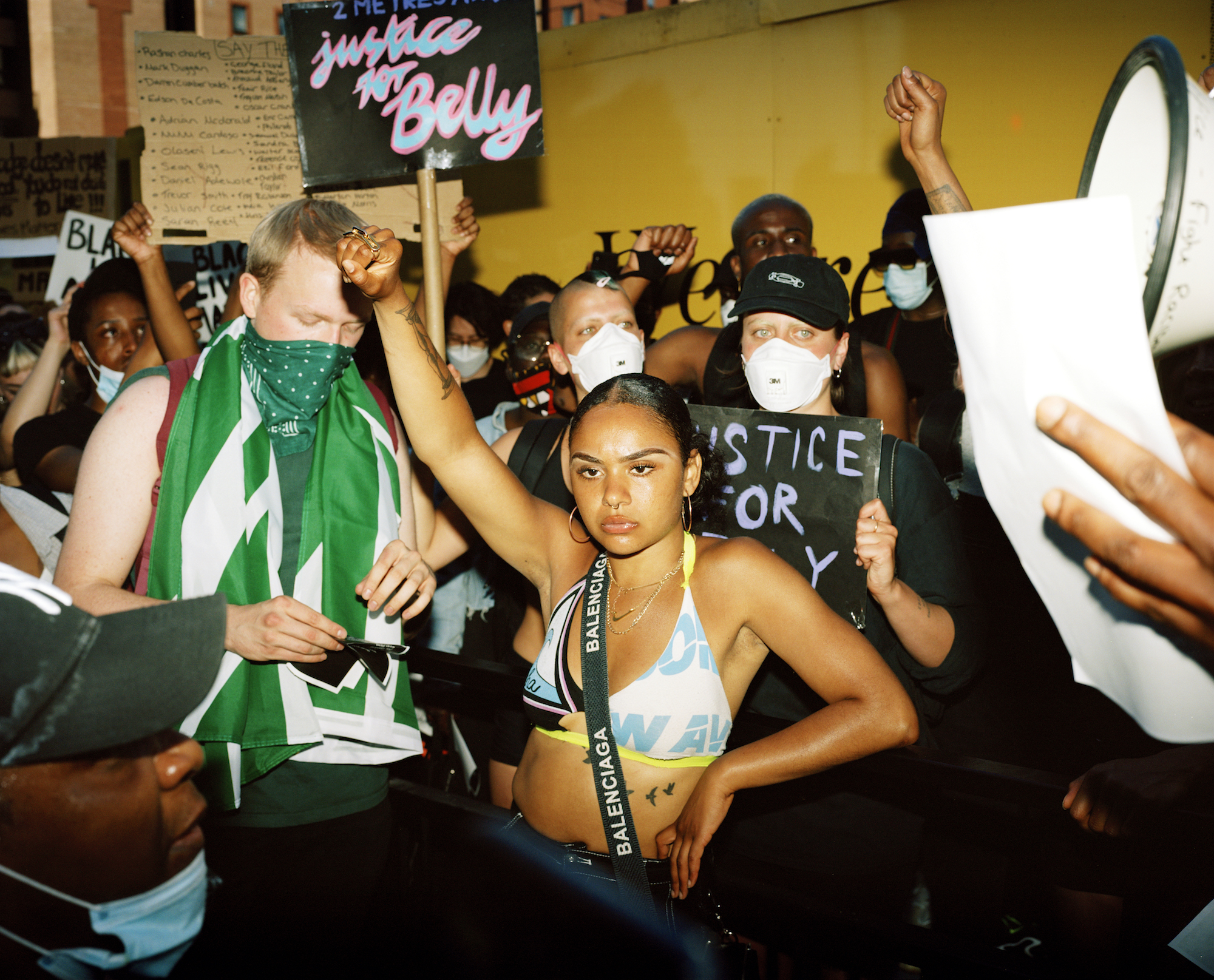
Tommy Sussex, 2020
Amidst images of ecstasy and abandon are those of protest and purpose. This powerful snapshot was taken by photographer and London College of Communication lecturer Tommy Sussex, who documented the Black Lives Matter protests that coursed through London in May and June 2020 in the wake of the murder of George Floyd. Fist raised in solidarity, face etched with frustration and defiance, the demonstrator in the foreground is part of the push for racial justice that pulsed through the streets that summer.
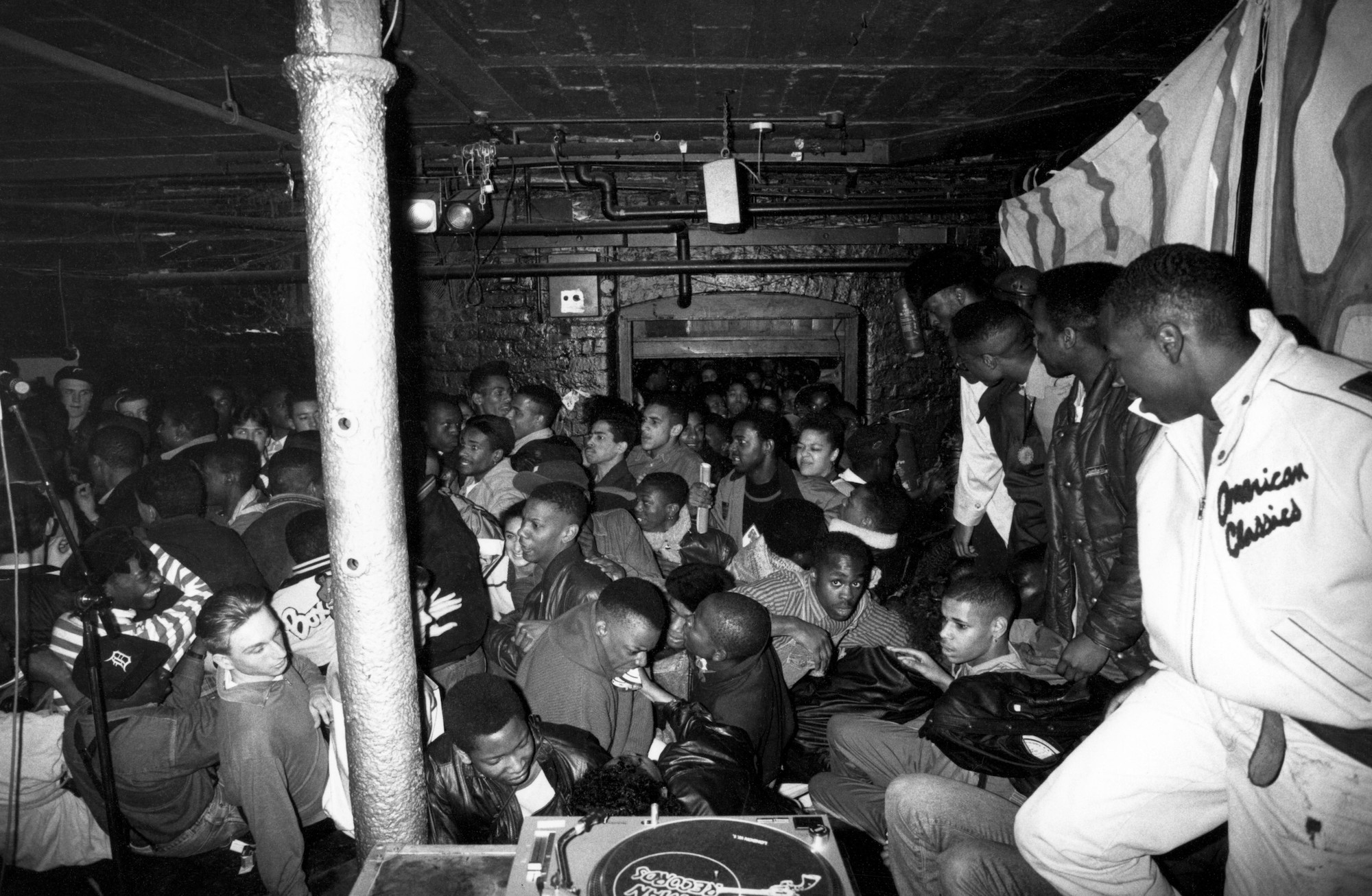
Normski, 1989
In the mid 1980s, hip hop, which had sprung out of the Bronx a decade earlier, was kicking off in London. Normski, who was in his late teens at the time, realised that this was his moment. The burgeoning photographer captured the raw energy of this scintillating cultural scene, cutting his teeth alongside graffiti artists, breakdancers, local hip-hop talent, and touring US names. This hectic shot from 1989 shows a rushing crowd at Dingwalls in Camden before Ultramagnetic MCs hit the stage. Normski would go on to become a true multi-hyphenate: a photographer, DJ, broadcaster, and leading authority on contemporary culture.
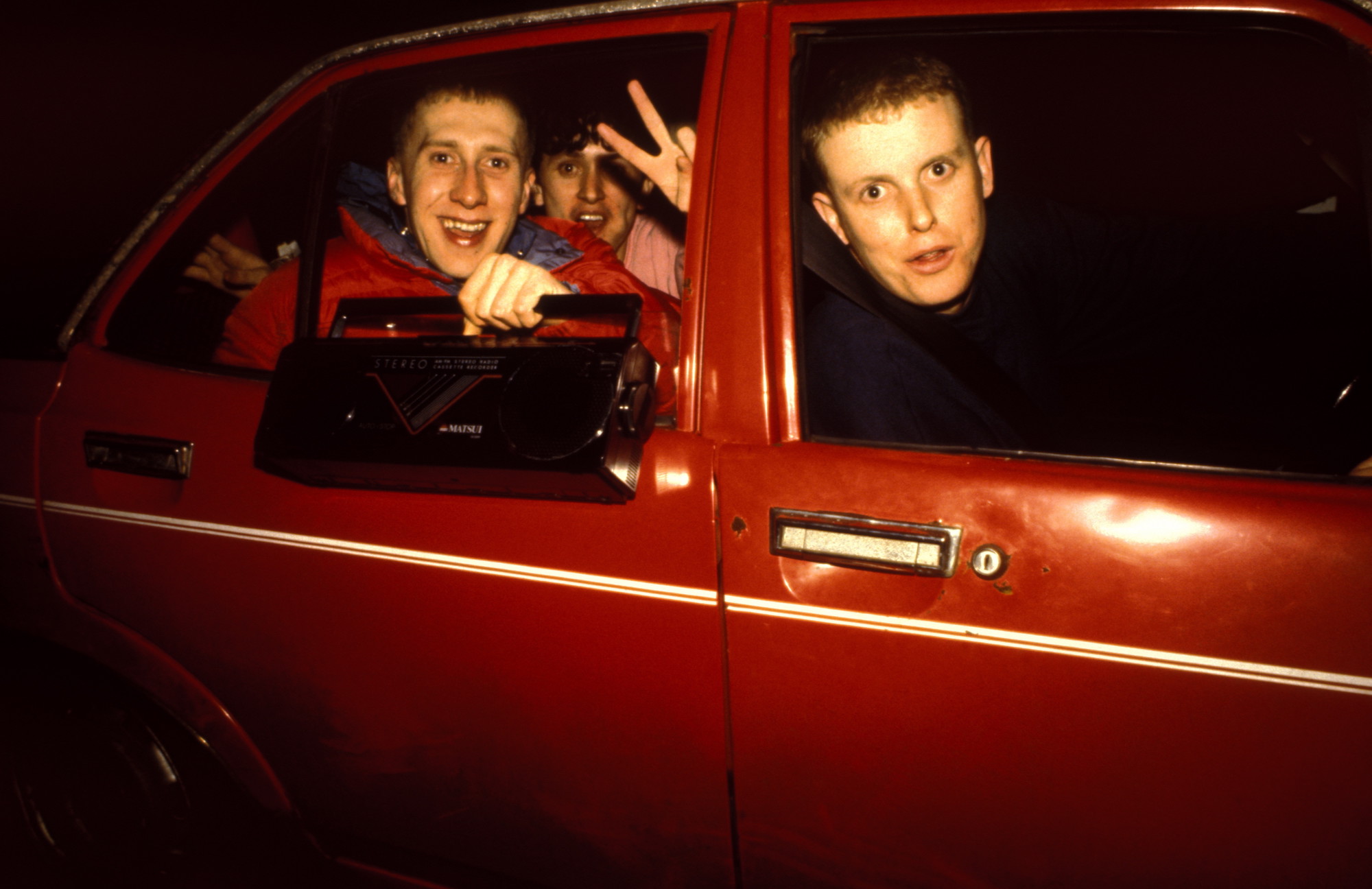
Tony Davis, 1991
Tony Davis grew up on Nottingham’s Clifton Estate during the 60s and 70s. He came of age listening to Bowie tunes and exploring the Northern Soul scene around the Midlands and North West. In the 90s, he shifted his focus to the rave scene in the Midlands, and, as “an observer rather than a participant”, spent the decade photographing the grins, gurns, and ecstatic nights of the generation below him. This photograph, taken at Sandbach service station on the M6, captures wide-eyed ravers driving home from Shelley’s nightclub in Stoke-on-Trent in the early hours.
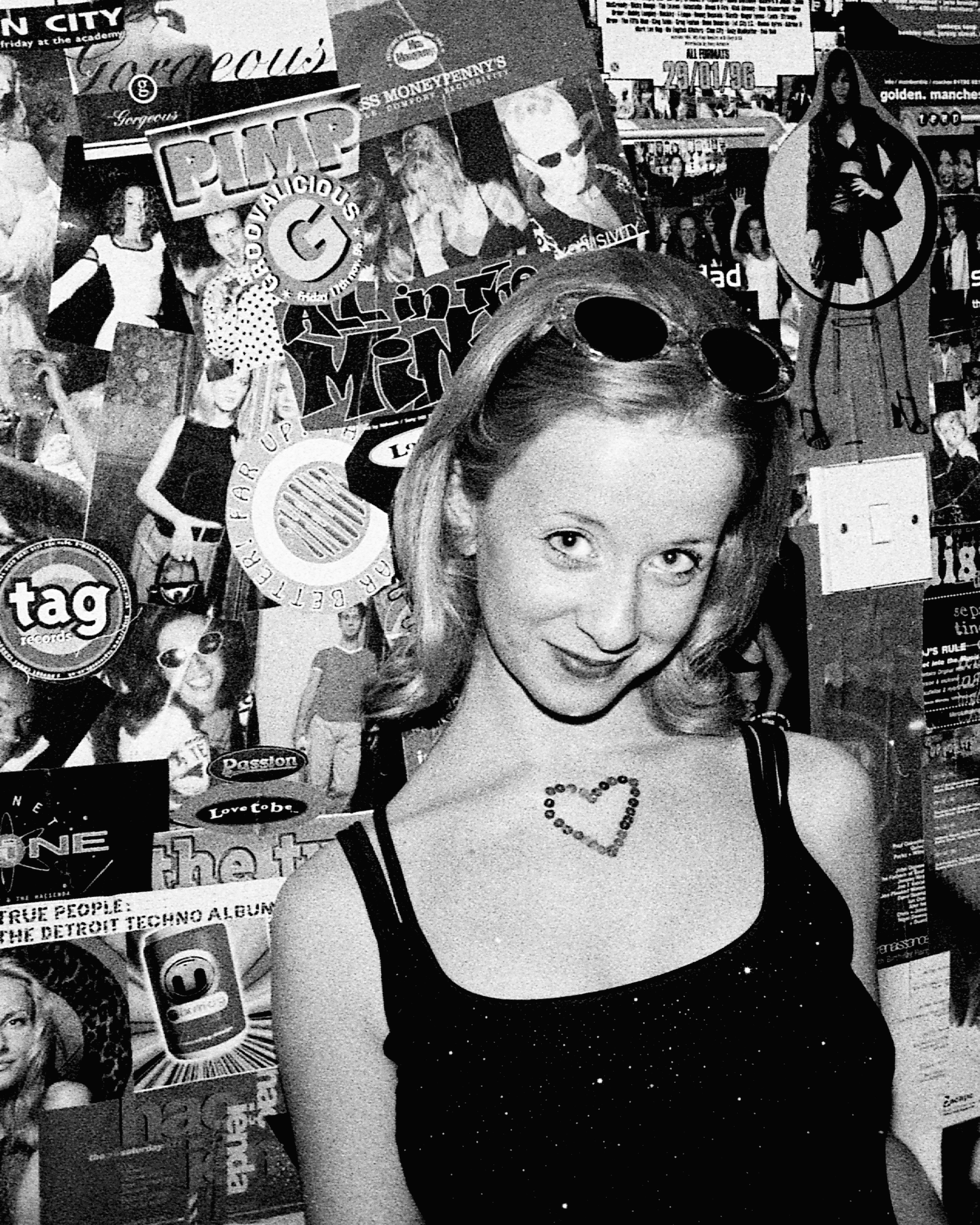
Lucy McCarthy, 1990s
Lucy McCarthy lived and breathed the rave scene of the mid-to-late-90s, as well as photographing it. She first picked up a camera around the age of 15, developing the film herself in her school’s darkroom, and often painting onto the photographs or sewing on embellishments to create playful montages. While many of her images were snapped at the centre of the action, portraying intoxicated bodies writhing to breakneck beats, this picture is of the 16-year-old McCarthy herself, at home in her bedroom in Coventry. Her walls are a chaotic collage of nightclub posters and the smiling faces of friends.
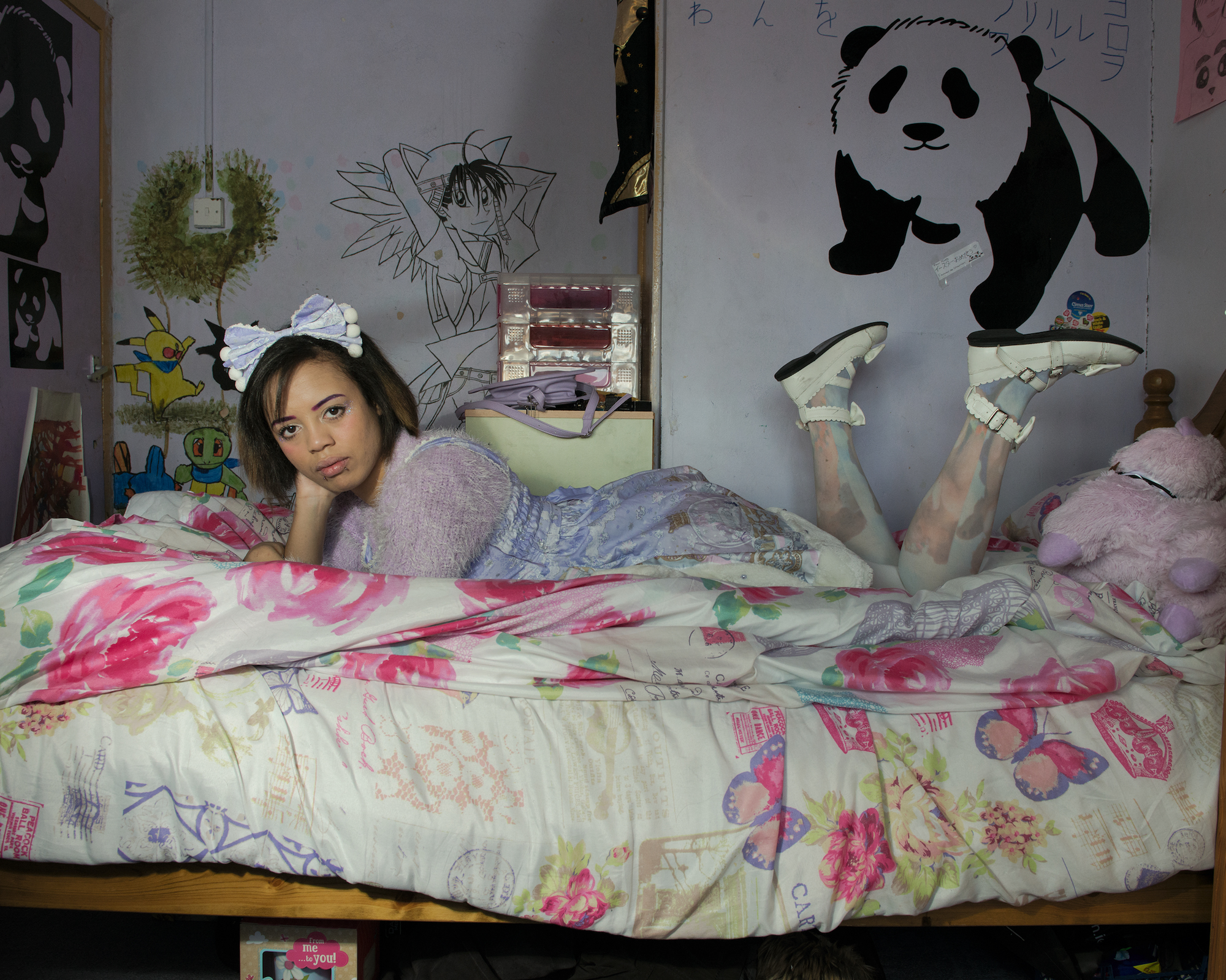
Michelle Sank, 2017
South African-born documentary photographer Michelle Sank is preoccupied with personal stories that reveal our humanity. This photograph is pulled from her 2017 series My.Self, in which she was commissioned by the Sandwell-based charity Multistory to document the lives of young people living in the Black Country, an area of the West Midlands. “The subjects were photographed in their bedrooms so that the objects and decoration within became metaphors for their individuality and their cultural contexts,” Sank says of her project.
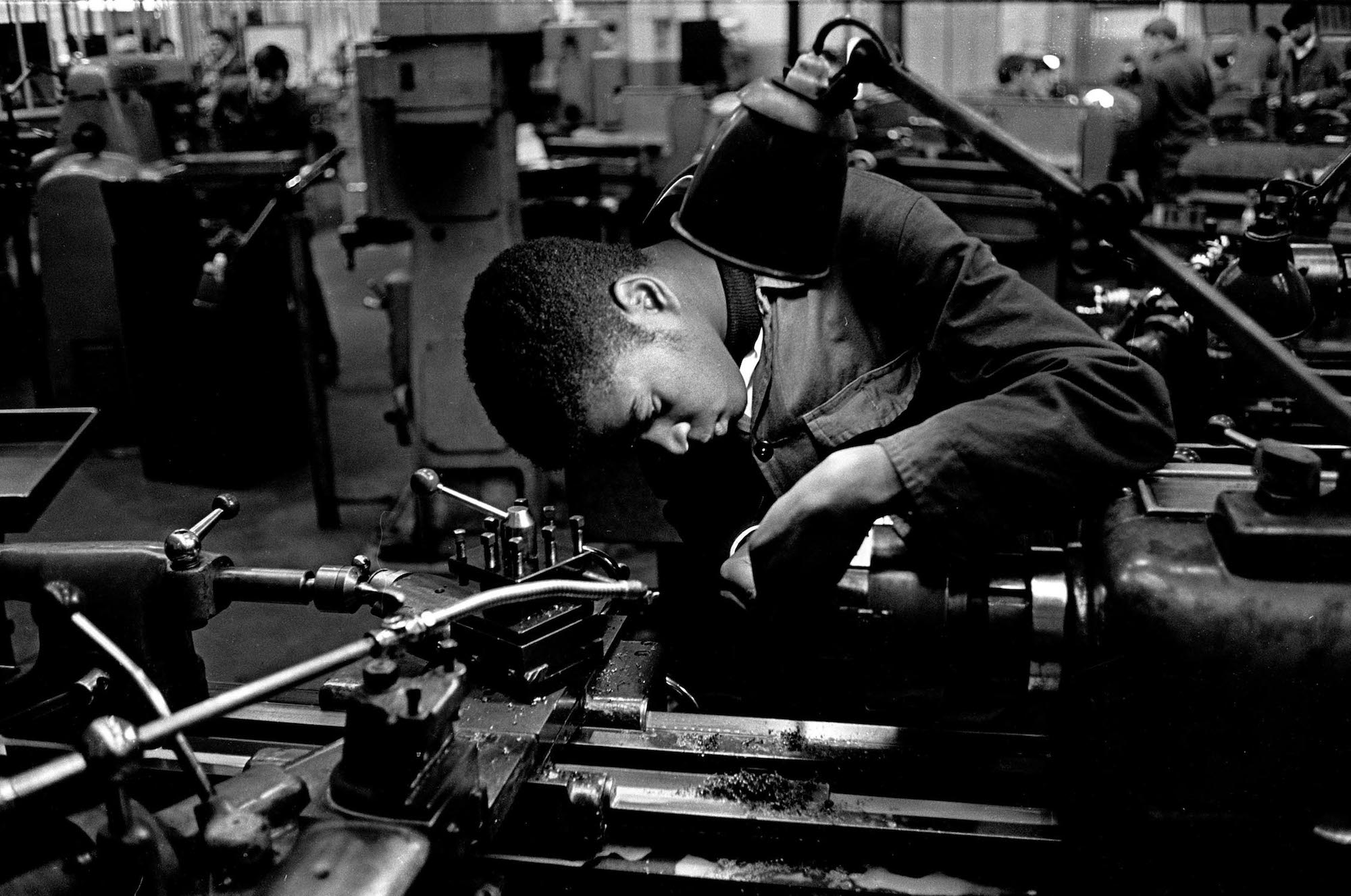
Nick Hedges, 1966
Worcestershire-born photographer Nick Hedges is best known for his groundbreaking work with housing and homelessness charity Shelter, in which he documented the lives of families living in abject poverty in cities across the UK during the housing crisis of the late 60s and early 70s. This earlier image, taken in 1966, shows an apprentice at the General Electric Company training school in Witton, Birmingham. It depicts a different side to teenage life, one of labour and necessity.
